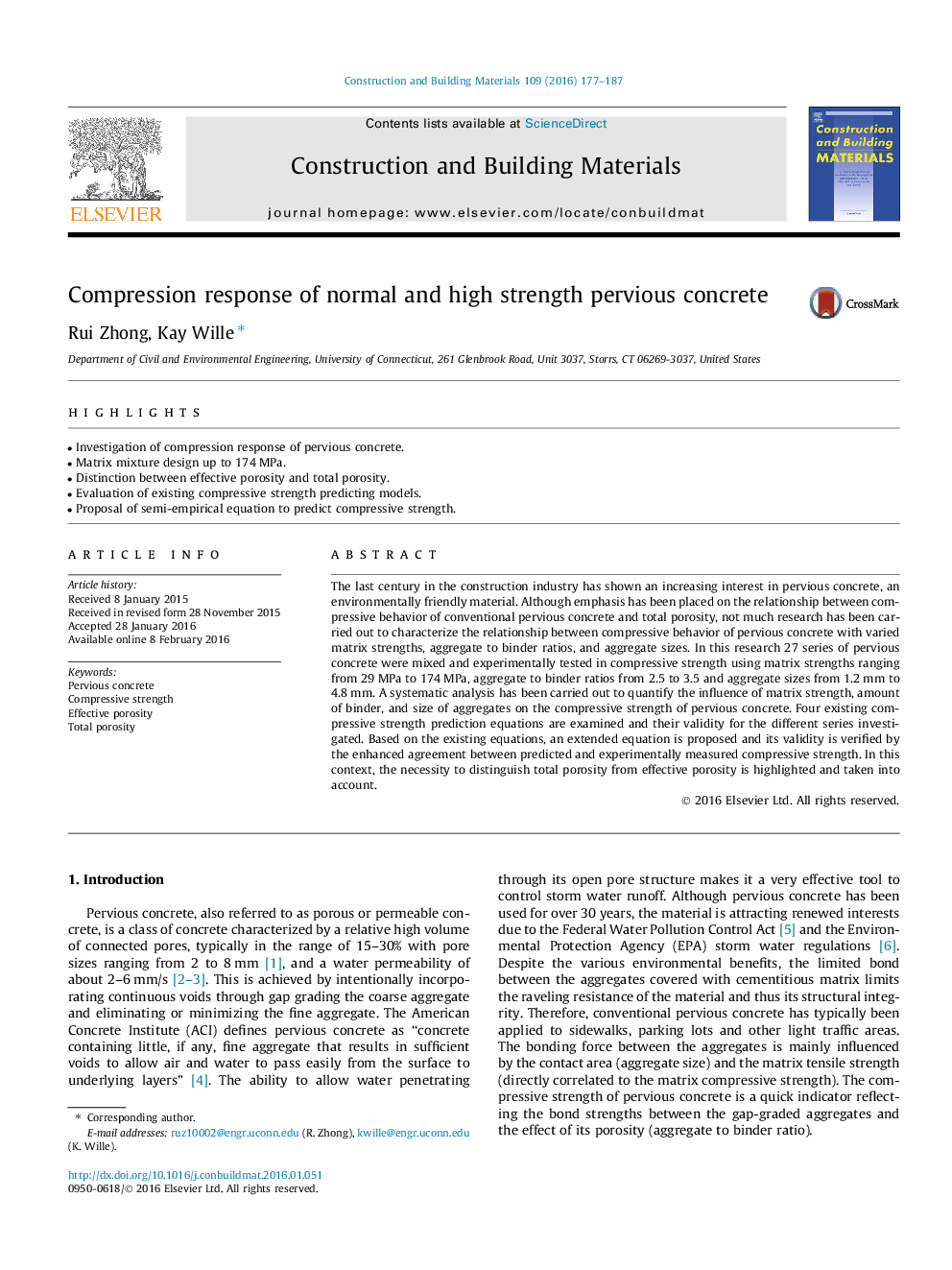| Article ID | Journal | Published Year | Pages | File Type |
|---|---|---|---|---|
| 256288 | Construction and Building Materials | 2016 | 11 Pages |
•Investigation of compression response of pervious concrete.•Matrix mixture design up to 174 MPa.•Distinction between effective porosity and total porosity.•Evaluation of existing compressive strength predicting models.•Proposal of semi-empirical equation to predict compressive strength.
The last century in the construction industry has shown an increasing interest in pervious concrete, an environmentally friendly material. Although emphasis has been placed on the relationship between compressive behavior of conventional pervious concrete and total porosity, not much research has been carried out to characterize the relationship between compressive behavior of pervious concrete with varied matrix strengths, aggregate to binder ratios, and aggregate sizes. In this research 27 series of pervious concrete were mixed and experimentally tested in compressive strength using matrix strengths ranging from 29 MPa to 174 MPa, aggregate to binder ratios from 2.5 to 3.5 and aggregate sizes from 1.2 mm to 4.8 mm. A systematic analysis has been carried out to quantify the influence of matrix strength, amount of binder, and size of aggregates on the compressive strength of pervious concrete. Four existing compressive strength prediction equations are examined and their validity for the different series investigated. Based on the existing equations, an extended equation is proposed and its validity is verified by the enhanced agreement between predicted and experimentally measured compressive strength. In this context, the necessity to distinguish total porosity from effective porosity is highlighted and taken into account.
